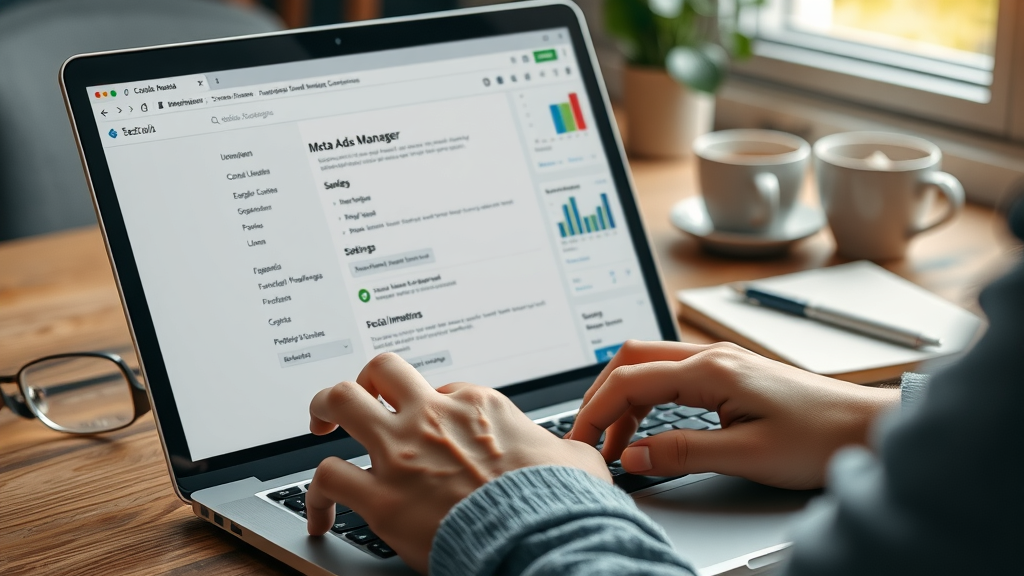Are your Meta ads struggling to gain traction despite great creative work? Could boosting social proof marketing in ads be the secret ingredient your Meta campaigns are missing to improve conversion rate? In a landscape saturated with ads, social proof—likes, comments, and shares—can dramatically elevate your Meta ad performance, driving lower costs and higher engagement. Let’s explore why social proof matters and how you can leverage Meta's latest tools to maximize it.
What Is Social Proof in Ads and Why It’s Crucial for Your Campaigns

At its core, social proof in ads is the visible proof of engagement — the likes, comments, and shares that demonstrate real audience interaction with your social media content. For Meta campaigns, social proof is far more than just vanity metrics; it’s the driving force behind enhanced user attention and algorithmic preference.
Defining Social Proof and Its Role in Advertising
Social proof in ads refers to the evidence that other users have engaged positively with your content, signaling trustworthiness and relevance to prospective viewers. When scrolling through a Meta feed, an ad with hundreds of comments or thousands of likes immediately attracts more clicks and interest than a blank one. This phenomenon is rooted in psychology — people tend to trust and follow the behavior of others.
As Alvaro Berrios of Alvaro Berrios Digital explains, “ Social proof acts like jet fuel for your campaigns, igniting engagement and lowering your CPMs, which ultimately reduces costs across your funnel. ” Essentially, social proof helps convert passive viewers into active prospects by providing social validation that your product or service resonates with others like them.
How Social Proof Influences Consumer Behavior and Algorithm Performance
User-generated engagements serve as a signal to Meta’s advertising algorithm that your ad is valuable and worthy of broader distribution. The higher the social proof, the better your ad performs in reach and frequency. In fact, ads brimming with visible social proof consistently experience lower CPMs (cost per thousand impressions), enabling marketers to acquire leads and customers at a reduced cost.
This dual impact—enhanced consumer trust and improved algorithm favorability—makes nurturing social proof a critical component of any successful Meta ad strategy. When consumers encounter ads with robust social proof, their confidence in the product’s authenticity increases, driving higher click-through and conversion rates.
According to the Meta advertising expert, " Social proof acts like jet fuel for your campaigns, igniting engagement and lowering your CPMs, which ultimately reduces costs across your funnel. "
Traditional Strategies to Build Social Proof in Meta Ads
Using Engagement Campaigns to Generate Likes, Comments, and Shares

Traditionally, advertisers have leveraged engagement campaigns focused on likes, comments, and shares to build social proof before turning their campaigns toward leads or conversions. The strategy involves running separate ads optimized purely for engagement to accumulate visible social proof, then repurposing that social proof in conversion campaigns.
This approach can yield tens of thousands of engagements at very low costs. For example, a Meta ad running an engagement objective might gather upwards of 68,000 engagements over a few months, mostly comprised of likes and shares with a handful of comments. These numbers create a foundation of credibility that can enhance future campaigns.
Limitations of Engagement Objectives for Accumulating Meaningful Comments
The expert explains, " Optimizing for engagements doesn’t guarantee comments; it includes likes, shares, and even video views, which don’t always translate into visible social proof. "
However, there’s a critical limitation with traditional engagement objectives: 'engagements' is a broad category that includes video views and likes, not just comments. Comments are particularly valuable because they are highly visible social proof that actively engages viewers. Likes and video views, while beneficial, may not visibly convey that same level of social validation.
Therefore, relying solely on engagement campaigns doesn’t guarantee a rapid or meaningful accumulation of social proof comments. This makes it challenging to build the strong, visible engagement that Meta’s algorithm rewards most effectively.
Meta’s New Feature to Enhance Social Proof in Ads
Overview of the Social Information Setting in Meta Ads Manager

Meta recently introduced a game-changing feature in its Ads Manager designed to address the challenges of building visible social proof marketing quickly and efficiently. This feature is accessed through the Advertising Settings in the Meta Ads Manager under the section called "Social Information."
It allows advertisers to combine likes and reactions across multiple ads that share similar text and images. By doing so, social engagements accumulate collectively across similar creatives, rather than being siloed in one campaign or ad set. This consolidation accelerates the build-up of visible social proof.
How Combining Likes and Reactions Across Similar Ads Works
When enabled, this setting allows Meta to pool the likes, comments, and reactions from ads with similar messaging and visuals—regardless of the actual campaign they belong to. For example, if you run two supplement campaigns with nearly identical ad copy and images (a pre-workout and a recovery supplement), comments and likes on one ad can be shown on the other.
This process boosts social proof across campaigns, helping smaller businesses rapidly amplify engagement on their ads. While Meta does not currently reveal which specific campaign generated which comment, the overall social proof effect is shared to benefit all related campaigns.
Practical Example: Applying Comments Across Multiple Campaigns

Imagine a digital marketer who manages multiple campaigns with slightly different offers but similar creative assets. By enabling the new social information setting, this marketer effectively connects the engagement dots across campaigns, allowing comments made on one ad to appear on others. This synergy significantly improves the visible social proof, attracting more clicks and fostering trust with minimal additional investment.
Benefits of Enhanced Social Proof Marketing for Small Businesses
Faster Accumulation of Comments and Engagements

Small businesses often struggle with the slow pace of organic engagement on Meta campaigns, but leveraging social proof marketing can accelerate results and improve landing page performance. This new feature dramatically speeds up the accumulation of visible comments and likes by pooling feedback across ads. This surge in social proof makes ads appear more credible and popular quickly, which is essential for startups and smaller players competing with bigger brands.
Lower CPMs and Reduced Advertising Costs

As social proof marketing increases, Meta’s ad delivery algorithm rewards your ads with lower CPMs, meaning fewer dollars spent to reach the same audience and improved conversion rate. For small businesses operating on tight budgets, this reduction in cost-per-impression leads directly to cheaper leads, higher ROIs, and an overall more efficient marketing spend.
Improved Trust and Credibility Through Visible Social Proof
The Meta expert notes, " This feature is a game-changer for small businesses struggling to build engagement quickly, helping them save money while boosting campaign effectiveness. "
Visible and authentic social proof strengthens consumer trust. Ads crowded with genuine likes and vibrant comments stand out in feeds, encouraging potential customers to engage and convert. This credible perception is invaluable in building a brand’s reputation and driving sustainable business growth.
How to Enable and Optimize Social Proof Settings in Your Meta Ad Account
Step-by-Step Guide to Accessing Advertising Settings and Social Information

To enable this valuable feature, log into your Meta Ads Manager account and click the hamburger menu on the top-left corner. Navigate to Advertising Settings , a section many advertisers rarely explore but packed with useful tools.
Inside, look for the Social Information settings. Make sure you activate the option labeled “ Combine likes and reactions for similar ads .” This will automatically merge engagement metrics across ads with similar creative elements, boosting your social proof effortlessly.
Tips for Ensuring Your Ads Benefit from Combined Likes and Reactions

To maximize the benefits, keep your ad copy and creative assets consistent across campaigns when targeting similar products or offers. The more alike your ads are, the more effectively Meta’s system can combine social proof metrics. Avoid drastically changing visuals or messaging if you want the pooled engagement to reflect across campaigns.
Regularly monitor your engagement metrics and CPMs to gauge performance improvements. Tailored testing of different creatives while maintaining some core similarities can help identify optimal combinations that reap the greatest social proof benefit.
Common Questions About Social Proof in Meta Ads
What is social proof in advertising?

Social proof in advertising is the influence that user interactions such as likes, comments, and shares have on persuading others to trust and engage with your ad. It operates as a psychological cue that signals popularity and credibility to prospective buyers.
What is meant by social proof?
Social proof refers broadly to evidence from others' behavior that guides decisions — in marketing, this translates to visible engagement metrics that validate the appeal and efficacy of your ads.
How do I keep social proof on Facebook ads?
Maintaining social proof involves consistently enabling social information settings in your ad account and running campaigns with similar creative, so likes and comments accumulate and display continuously across your ads.
How can advertisers use social proof to sell their product?
Advertisers leverage social proof marketing by showcasing authentic user engagement, customer testimonials, and reviews to build trust and lower buyer hesitation, leading to higher conversion rates.
Case Studies and Examples of Social Proof Marketing Success
Examples of Social Proof in Meta Ads That Boost Conversion Rates
Brands that effectively accumulate visible comments and reactions through social proof marketing see marked improvements in click-through rates and reduced ad spend, boosting overall conversion rate. This is especially true for campaigns employing Meta’s new combined social proof feature, which increases the perceived popularity of ads rapidly, boosting conversions.
Customer Testimonials and Reviews as Powerful Social Proof

Including customer testimonials and customer reviews within or alongside your Meta ads further elevates social proof marketing by adding personal, trustworthy endorsements that enhance landing page credibility. Real user stories build emotional connections that resonate with prospective customers, accelerating the sales journey.
|
|
|
Comparison Table: Traditional Engagement Campaigns vs. Meta’s New Combined Social Proof Feature |
|
Metric |
Traditional Engagement Campaigns |
Meta’s Combined Social Proof Feature |
|---|---|---|
|
CPM (Cost per 1000 Impressions) |
Relatively Higher |
Lower Due to Aggregated Engagement |
|
Engagement Rate |
High for Likes and Views, Low for Visible Comments |
Higher Visible Comments and Likes Across Ads |
|
Conversion Impact |
Limited by Fragmented Engagement |
Enhanced Due to Boosted Social Proof |
Key Takeaways: Maximizing Social Proof in Ads for Better Campaign Results
-
Social proof significantly improves ad performance by increasing engagement and lowering costs.
-
Traditional engagement campaigns have limitations in generating visible comments.
-
Meta’s new feature combines likes and reactions across similar ads to accelerate social proof accumulation.
-
Small businesses stand to benefit greatly from this update with faster results and cost savings.
-
Enabling social information settings is essential to leverage this new capability.
Conclusion: Elevate Your Meta Ad Campaigns with Effective Social Proof Strategies
As the Meta advertising expert Alvaro Berrios concludes, " Ensuring your ads have strong social proof is no longer optional — it’s a critical factor that can make or break your campaign’s success. "
In today’s competitive advertising landscape, integrating social proof marketing in ads is essential for maximizing Meta campaign efficiency and boosting conversion rates. By harnessing engagement and leveraging Meta’s latest tools that consolidate social proof across your campaigns, you can fuel performance, cut costs, and build trust with your audience more effectively than ever before.
Next Step
Call us at 207-710-1449 for all your marketing needs. Let our team at Digital Marketing All get your business more visibility.
 Add Row
Add Row  Add
Add 








Write A Comment